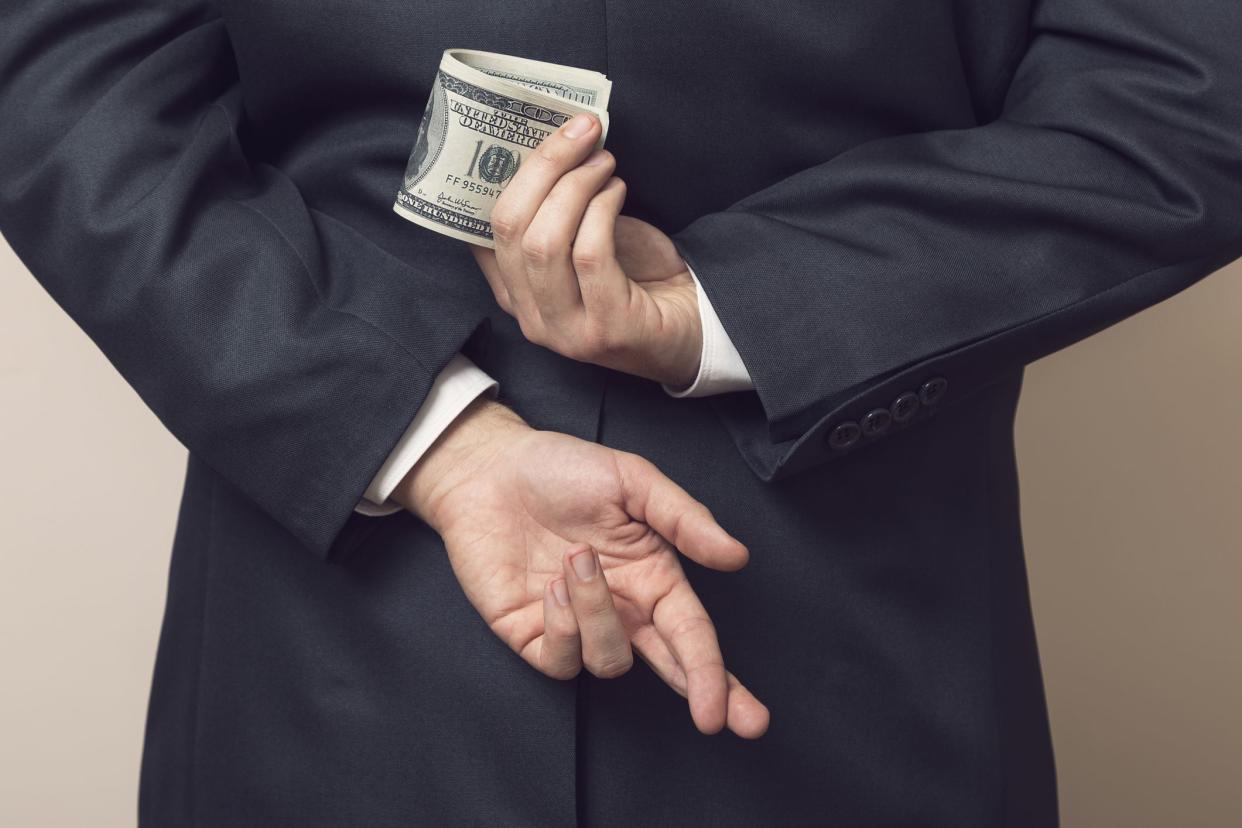8 Warning Signs That You're Up to Your Neck in Debt

How Much Debt Is Too Much?
Debt is a powerful tool that can boost your success or cause your financial life to crash and burn. The trick to using debt wisely is knowing the difference between good and bad debt and the right amounts based on your income and goals.
Today, I’ll cover tips to use debt strategically, so it helps not hurts you. Plus, you’ll learn eight ways to know if you have too much debt and action steps to protect your finances.

Debt: A complex topic
Debt is a complex topic because people have different opinions about it. Some insist that no amount of debt is acceptable, not even a home mortgage. Others acknowledge that some debts, such as a mortgage or student loans, are OK but using a credit card or taking out a car loan is a mistake. There’s a camp that believes using debt to purchase anything is acceptable as long as you can afford the payments.
My recommendation is that you should consider going into debt when:
You’re confident that it will give you a financial return.
You have a steady income or ample savings to repay it on time.
You qualify for a competitive interest rate and terms.
For example, if you buy an affordable home with a low-rate mortgage, you can build equity over time. As you pay down the principal balance and/or your home value appreciates, you build wealth. That’s why financing a home is generally considered good debt.
Additionally, mortgage interest rates are at historic lows. They also come with an interest tax deduction, making home loans cost even less on an after-tax basis. Depending on where you live, buying a home may be less expensive than renting a similar property, especially outside of large cities.
Another example of good debt is a reasonable amount of student loans. Interest rates vary depending on whether you have a federal or private loan; however, they typically have relatively low interest rates.
Plus, some amount of interest paid on education debt is tax-deductible, which further reduces the cost. And best of all, getting an education gives you the ability to earn more over your lifetime.

What debt should you avoid?
The problem with taking on too much debt is that it can hold you back from accomplishing key objectives, such as building an emergency fund, investing for retirement, or reaching other financial dreams. So even for good debts, such as a home or education loan, it’s important to maintain reasonable levels based on your current or expected future income.
The takeaway is that you shouldn’t go into debt for something that doesn’t give you a financial return. For instance, financing consumer goods or vacations causes you to lose wealth, not build it.
Add high-rate credit card interest on top, and you have a potential financial disaster. If it takes years to pay off a luxury item charged on a credit card, it could end up costing double or triple the original price.
8 signs of too much debt and actions to take
Here are eight warning signs that you may have too much debt and action steps to get it under control.

1. You’re unsure how much debt you have
If you don’t know how many or how much total debt you have, you’re not taking care of your financial health. Staying aware of your accounts and debt balances is the first step to getting them under control and improving your entire financial life.
Take action
Get organized by creating a spreadsheet listing each account name, number, interest rate, and amount owed. Then sort your debts from highest to lowest interest rate.
In general, that’s the best way to tackle debt because it saves the most interest, which you can use to pay down more debt. However, if you have a small debt with a low interest rate that you want to crush first, go for it!

2. You avoid looking at your bills
If you’re afraid to open your paper or e-bills because you don’t want to see the balances, remember that hiding from a financial problem doesn’t make it go away. Missing due dates causes you to rack up late fees and your credit scores to drop, which causes more money problems.
Take action
Be proactive about staying on top of your bill due dates. You might enter them in a spreadsheet, in your calendar, or centralize them in your bank’s online bill pay center.
Contact your creditors to discuss any financial hardship and ask for their help. You may be able to work out a payment plan to get caught up with overdue balances or have late fees waived.

3. You only pay the minimum on credit cards
If you’re stuck in a cycle of only paying the minimum on your credit cards each month, that indicates you’re carrying too much debt. As previously mentioned, as interest accrues, you could end up paying double or triple the original cost of the items you charged.
For example, say you have a $5,000 balance on a card that charges 18% APR. If you only paid the $100 minimum, it would take you more than 30 years to pay it off! If you paid $250 per month, you’d pay off the balance in less than nine years.
And paying $500 would wipe out eliminate the debt in just over four years. These pay-off time frames assume that you don’t increase credit card balances with any additional charges.
Take action
Make a plan to stop making new charges and pay as much as possible on credit cards each month to get out of debt as quickly as possible.

4. Your credit cards are maxed out
If you’re using credit cards to satisfy a shopping habit or buy necessities during a rough financial patch, you’ll eventually hit your credit limit. That hurts your credit and may cause you to incur fees if you go over your credit limit.
Even if you pay more than the minimum, having a maxed-out card causes your credit utilization ratio to skyrocket, killing your credit scores. If you’re consistently using more than 20% to 30% of your credit lines, you probably have a debt problem to tackle.
Take action
Stop making charges or getting expensive cash advances on maxed-out cards and start making higher payments than the monthly minimum.

5. You don’t have savings
If you don’t have a cash reserve, any unexpected expense could send you into a tailspin that causes you to go further into debt. Having some amount of savings is a critical way to avoid getting into debt in the first place.
Take action
Make a plan to radically cut your expenses and begin setting aside as much as possible each month in an emergency fund at an FDIC-insured bank. Start small by setting aside 1% of your income until you have several months’ worth of living expenses in the bank.

6. You got turned down for new credit
If you recently got denied credit, you probably have low credit scores. Poor credit can result from one or many factors, such as having late payments, judgments, liens, too little credit history, or too much debt. Check out 7 Essential Rules to Build Credit Fast to learn how credit scores get calculated and tips to raise them.
Take action
Use a free site such as Credit Karma or AnnualCreditReport.com to review your credit reports and make sure there aren’t any errors hurting your scores.

7. You’ve lied about your finances
If you’re lying to family or friends about your spending habits or how much debt you have, you probably know there’s a severe problem that you need to handle. If you’re worried, losing sleep, and having trouble concentrating due to debt, it’s time to take action.
Take action
Create and stick to a realistic budget or get help from a debt counselor or financial planner. The National Foundation for Credit Counseling is a great resource to find help.

8. Your debt-to-income (DTI) ratio is too high
Your DTI is a crucial ratio that lenders use to evaluate you, and you can use it, too. Even if you don’t plan on taking out a large loan anytime soon, calculating your DTI is an excellent way to monitor your financial health over time.
Take action
Figure your DTI by adding up your total monthly debt payments—including credit cards, loans, and your rent or mortgage payment—and dividing that amount by your gross (pre-tax) monthly income. For example, if your monthly income is $5,000 and your debt is $2,500, your DTI is 50% ($2,500 / $5,000 = 0.5).
Most mortgage lenders require that your house payment wouldn’t exceed about 30% of your monthly gross income. Your total debt, including the new mortgage payment, shouldn’t add up to more than about 40% of your gross income.
If you have a high DTI, work on paying off your debt by cutting expenses, increasing your income, or doing both. Additionally, paying down your outstanding debt balances boosts your credit. That may allow you to qualify for debt optimization tools, such as a balance transfer credit card or a low-interest personal loan.
The good news is that it’s never too late to turn around your finances if you recognize these debt warning signs. The best way to improve any money problem is to be brave and face it head-on. Denying a debt problem only makes it worse. So, the sooner you address it and take these recommended action steps, the sooner you’ll make positive financial changes.
This article originally appeared on QuickandDirtyTips.com and was syndicated by MediaFeed.org.
